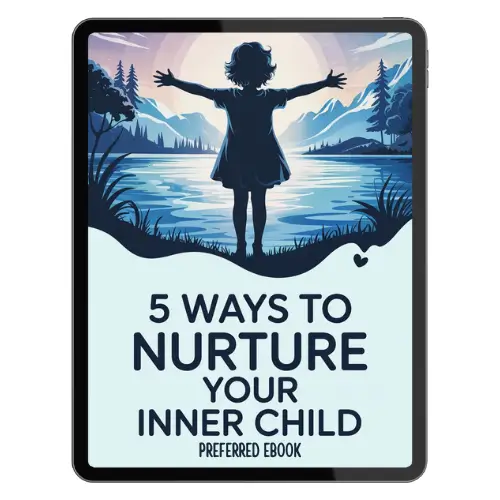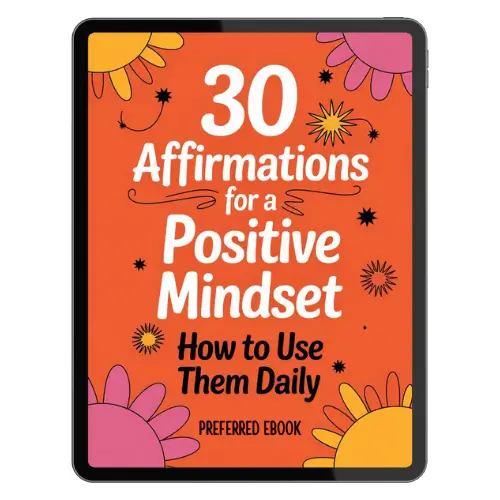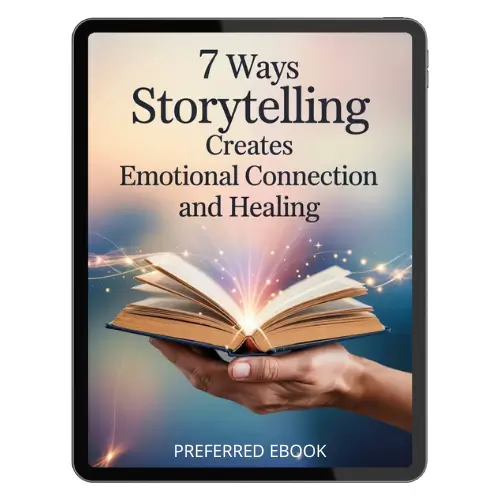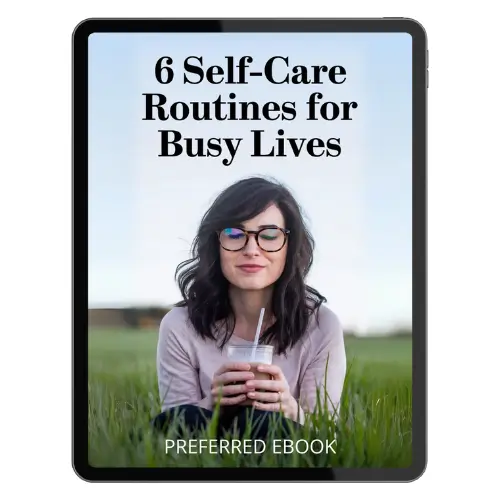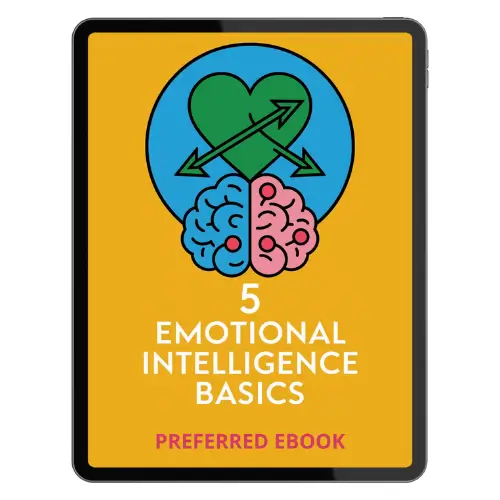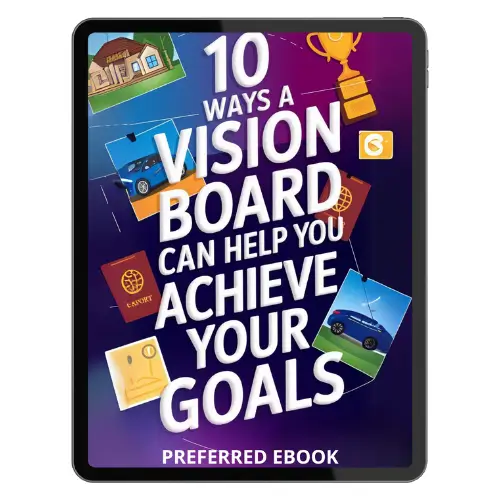Index
Introduction
- Understanding Slow Living
- The Benefits of Embracing a Slower Pace
Chapter 1: Mindful Mornings
- Starting the Day with Intention
- Morning Rituals for a Calm Mind
Chapter 2: Savoring Meals
- The Art of Cooking and Eating Mindfully
- Recipes for Slow-Cooked Comfort
Chapter 3: Nature Connection
- Embracing the Outdoors
- Activities for Mindful Nature Walks
Chapter 4: Digital Detox
- Reducing Screen Time
- Creating Tech-Free Spaces
Chapter 5: Simple Living
- Decluttering Your Space
- Embracing Minimalism
Chapter 6: Cultivating Hobbies
- Rediscovering Passions
- Ideas for Creative Expression
Chapter 7: Meaningful Relationships
- Nurturing Connections
- Quality Time Over Quantity
Chapter 8: Reflection and Gratitude
- Journaling Practices for Mindfulness
- Daily Gratitude Exercises
Conclusion
- Embracing the Slow Living Philosophy
- Tips for Sustaining a Slower Lifestyle
Introduction
In a world that constantly pushes us to do more and move faster, the concept of slow living offers a refreshing alternative. Embracing a slower pace allows us to savor life’s moments, reduce stress, and foster deeper connections with ourselves and others. This eBook explores eight ways to enjoy slow living, providing practical tips and insights to help you cultivate a more mindful and fulfilling life.
Chapter 1: Mindful Mornings
Starting the Day with Intention
The morning serves as a blank canvas, offering a fresh start to each day. How you choose to begin your morning can significantly influence your mood, energy levels, and overall mindset. Instead of jumping straight into a hectic routine, consider taking a few moments to set your intentions for the day.
Why Intentions Matter
Setting intentions allows you to focus on what truly matters to you, helping you prioritize your tasks and approach your day with purpose. This practice encourages mindfulness, enabling you to be more present in each moment throughout the day.
Morning Rituals for a Calm Mind
Creating a morning ritual can transform your experience from chaotic to serene. Here are some effective practices to cultivate mindful mornings:
1. Wake Up Early
Rising early gives you a head start on the day. The quiet hours of the morning are often the most peaceful, allowing you to reflect and prepare for what lies ahead.
- Benefits: Waking up early can lead to increased productivity, reduced stress, and more time for personal activities.
2. Breathe and Center Yourself
Take a few moments to breathe deeply and center your thoughts. This practice can ground you and reduce morning anxiety.
- Breathing Exercise: Sit comfortably, close your eyes, and inhale deeply through your nose for a count of four. Hold your breath for four counts, then exhale slowly through your mouth for six counts. Repeat this cycle three to five times.
3. Engage in Morning Meditation
Meditation is a powerful tool for cultivating mindfulness. Even a few minutes of meditation can help clear your mind and set a positive tone for the day.
- Simple Meditation Practice:
- Find a quiet space where you won’t be disturbed.
- Sit comfortably and focus on your breath.
- If your mind wanders, gently bring your focus back to your breath.
- Aim for 5 to 10 minutes, gradually increasing the duration as you become more comfortable.
4. Stretch or Practice Yoga
Gentle stretching or yoga can awaken your body and mind, promoting flexibility and reducing tension.
- Simple Morning Stretch Routine:
- Neck Rolls: Gently roll your head from side to side.
- Shoulder Shrugs: Lift your shoulders towards your ears and then release.
- Cat-Cow Pose: On all fours, alternate between arching your back and rounding it.
5. Enjoy a Nourishing Breakfast
Breakfast is often referred to as the most important meal of the day. Taking time to prepare and enjoy a healthy breakfast can nourish your body and mind.
- Mindful Eating Practices:
- Prepare your breakfast mindfully, appreciating the colors and textures of the ingredients.
- Sit down to eat without distractions, turn off the TV and put away your phone.
- Savor each bite, focusing on the flavors and sensations.
6. Set Daily Intentions
Before diving into your tasks, take a moment to set your intentions for the day. Ask yourself what you want to achieve and how you want to feel.
- Journaling Exercise:
- Write down three intentions for the day. These can be related to your work, personal goals, or how you want to interact with others.
- Examples: “I will approach challenges with patience,” or “I will take breaks to recharge.”
The Power of Consistency
Establishing a mindful morning routine takes time and practice. Consistency is key to reaping the benefits. Start with a few simple practices that resonate with you, and gradually incorporate more as you feel comfortable. Over time, these rituals will become second nature, setting a positive tone for each day.
Chapter 2: Savoring Meals
The Art of Cooking and Eating Mindfully
In our fast-paced world, meals often become a hurried affair, squeezed into our busy schedules. However, embracing the practice of savoring meals can enhance your dining experience and promote a deeper connection with your food. Mindful eating encourages us to appreciate not just the flavors but also the process of preparing and enjoying our meals.
Why Mindful Eating Matters
Mindful eating brings awareness to the act of eating, helping us to slow down and truly enjoy our food. This practice can lead to several benefits:
- Improved Digestion: Eating slowly allows your body to properly digest food, reducing bloating and discomfort.
- Enhanced Satisfaction: When you savor each bite, you’re more likely to feel satisfied with smaller portions, which can aid in weight management.
- Emotional Connection: Mindful eating fosters a deeper appreciation for the nourishment food provides, enhancing your overall relationship with food.
Preparing Meals with Intention
The process of cooking can be as rewarding as the meal itself. Here are ways to make your cooking experience more mindful:
1. Choose Fresh, Seasonal Ingredients
Opt for fresh, seasonal produce whenever possible. Not only does this enhance the flavor of your meals, but it also supports local farmers and promotes sustainability.
- Farmers’ Markets: Visit local markets to discover fresh ingredients and connect with the community.
2. Create a Calm Cooking Environment
Set the stage for a relaxing cooking experience. A calm kitchen can enhance your enjoyment and creativity.
- Declutter Your Space: Keep your cooking area organized and free of distractions.
- Play Soft Music: Create a soothing atmosphere with gentle background music or sounds.
3. Engage Your Senses
Use all your senses while cooking. Notice the colors, textures, and aromas of your ingredients.
- Mindful Preparation: As you chop vegetables or stir sauces, pay attention to the sensations in your hands and the sounds of cooking.
Eating Mindfully
Once your meal is prepared, it’s time to sit down and enjoy it mindfully. Here are some tips to enhance your dining experience:
1. Set the Table
Take a moment to set a beautiful table. Use your favorite dishes, light candles, or add fresh flowers. This simple act can elevate the meal into a special occasion.
2. Practice Gratitude
Before you begin eating, take a moment to express gratitude for your meal. Acknowledge the effort that went into growing, preparing, and cooking your food.
- Gratitude Reflection: Consider the journey of your meal, from the farm to your table, and appreciate the resources and people involved.
3. Eat Without Distractions
Create a distraction-free environment by turning off devices and focusing solely on your meal. This allows you to be fully present and enjoy each bite.
- Mindful Bites: Take small bites and chew slowly, savoring the flavors and textures. Pay attention to the sensations in your mouth and the taste of each ingredient.
4. Engage in Conversation
If dining with others, engage in meaningful conversation. Share stories and experiences, allowing the meal to become a time for connection and bonding.
- Active Listening: Practice active listening by focusing on what others are saying, fostering deeper connections.
Recipes for Slow-Cooked Comfort
To embrace the art of savoring meals, here are a couple of recipes that invite you to slow down and enjoy the cooking process:
1. Hearty Vegetable Stew
Ingredients:
- 2 tablespoons olive oil
- 1 onion, chopped
- 3 carrots, sliced
- 2 celery stalks, sliced
- 3 cloves garlic, minced
- 4 cups vegetable broth
- 2 cups chopped seasonal vegetables (e.g., zucchini, bell peppers)
- 1 can diced tomatoes
- 1 teaspoon dried thyme
- Salt and pepper to taste
Instructions:
- Heat olive oil in a large pot over medium heat. Add onion, carrots, and celery, sautéing until softened.
- Stir in garlic and cook for an additional minute.
- Add broth, seasonal vegetables, tomatoes, thyme, salt, and pepper. Bring to a boil.
- Reduce heat and let simmer for at least 30 minutes, allowing flavors to meld.
- Serve warm, savoring the comforting aroma and flavors.
2. Mindful Breakfast Bowl
Ingredients:
- 1 cup cooked quinoa
- ½ banana, sliced
- ¼ cup berries (strawberries, blueberries, or raspberries)
- 1 tablespoon almond butter
- 1 tablespoon chia seeds
- Drizzle of honey (optional)
Instructions:
- In a bowl, layer the cooked quinoa as the base.
- Arrange banana slices and berries on top.
- Add a dollop of almond butter and sprinkle chia seeds.
- Drizzle with honey if desired, and enjoy your nourishing breakfast mindfully.
Chapter 3: Nature Connection
Embracing the Outdoors
In our increasingly urbanized and digital world, it’s easy to lose touch with nature. However, connecting with the natural environment can significantly enhance our well-being, providing a sense of peace, grounding, and joy. Nature connection encourages us to slow down, breathe deeply, and appreciate the beauty around us.
Why Nature Matters
Spending time in nature offers numerous benefits for both physical and mental health:
- Stress Reduction: Nature has a calming effect that can lower cortisol levels, reducing stress and anxiety.
- Improved Mood: Exposure to natural surroundings can elevate mood and increase feelings of happiness.
- Enhanced Focus: Nature provides a restorative environment that can improve concentration and cognitive function.
- Physical Activity: Engaging with the outdoors often involves movement, promoting physical health through activities like walking, hiking, or gardening.
Activities for Mindful Nature Walks
To truly appreciate nature, consider incorporating mindful walks into your routine. Here are some activities to enhance your connection with the outdoors:
1. Forest Bathing
Forest bathing, or “Shinrin-yoku,” is a Japanese practice that involves immersing yourself in a forest environment. This practice encourages a sensory experience that promotes relaxation and rejuvenation.
- How to Practice:
- Find a nearby forest or park.
- Walk slowly and deliberately, focusing on the sights, sounds, and smells around you.
- Take time to touch the trees, listen to the rustling leaves, and observe wildlife.
2. Mindful Hiking
Hiking allows you to explore beautiful landscapes while engaging in physical activity. To make your hike more mindful, focus on your surroundings and how your body feels during the journey.
- Tips for Mindful Hiking:
- Choose a trail that matches your fitness level and interests.
- Leave your phone behind or use it only for navigation and photography.
- Pay attention to your breath, the rhythm of your steps, and the sensations in your body.
3. Gardening
Gardening is a wonderful way to connect with nature while cultivating your own food or flowers. It encourages mindfulness and patience as you nurture plants.
- Getting Started:
- Whether you have a backyard or a small balcony, consider growing herbs, vegetables, or flowers.
- Spend time each day tending to your plants, observing their growth and changes.
- Use gardening as a form of meditation, immersing yourself in the process and enjoying the earth beneath your hands.
Creating a Nature Ritual
Integrating nature into your daily life doesn’t have to be complicated. Here are some ways to create a nature ritual that fits your lifestyle:
1. Daily Walks
Make it a habit to take daily walks, even if it’s just around your neighborhood. Aim for at least 15-30 minutes each day.
- Focus on Mindfulness: As you walk, notice the details, colors of flowers, patterns in the leaves, or the sound of birdsong.
2. Nature Journaling
Keep a nature journal to document your observations and experiences. This practice encourages reflection and deepens your connection with your surroundings.
- What to Include:
- Sketch the plants and animals you encounter.
- Write down your thoughts, feelings, and any chandges you notice in the seasons.
3. Seasonal Celebrations
Embrace the changing seasons by celebrating nature’s cycles. Create rituals or events that honor the transitions throughout the year.
- Ideas for Celebration:
- Host a picnic in the park during spring blossoms.
- Organize a cozy bonfire in the fall to enjoy the changing leaves.
Chapter 4: Digital Detox
Reducing Screen Time
In today’s hyper-connected world, our devices often demand our attention and time, leaving little room for genuine experiences and self-reflection. A digital detox involves taking intentional breaks from technology to create space for mindfulness, creativity, and connection with the present moment. By reducing screen time, we can reclaim our time and energy, fostering a more fulfilling and balanced life.
Why a Digital Detox Matters
Engaging in a digital detox can lead to several significant benefits:
- Enhanced Focus: Reducing distractions from notifications and social media can improve your ability to concentrate on tasks and be present in conversations.
- Better Sleep: Limiting screen time, especially before bed, can improve sleep quality and duration, leading to increased energy and well-being.
- Improved Mental Health: Taking a break from social media can reduce feelings of anxiety, loneliness, and comparison, fostering a healthier mindset.
- Increased Creativity: With less screen time, you free up mental space for creative thinking and exploration of new interests.
Creating Tech-Free Spaces
To effectively implement a digital detox, consider establishing tech-free zones and routines in your life. Here are some practical strategies:
1. Designate Specific Areas
Choose areas in your home where electronic devices are not allowed, such as the dining room or bedroom. This helps create a sanctuary free from distractions.
- Dining Room: Make mealtime a tech-free experience to foster connection with family or friends. Enjoy meaningful conversations without the interruption of screens.
2. Schedule Downtime
Set specific times each week for a digital detox. This could be a few hours each day or a full day each week dedicated to unplugging.
- Digital Detox Days: Choose one day a week to disconnect entirely from devices. Use this time to engage in activities that nourish your soul, such as reading, hiking, or spending time with loved ones.
Mindful Device Usage
When you do use technology, approach it with mindfulness. Here are ways to make your screen time more intentional:
1. Limit Social Media
Consider reducing your time on social media by setting daily limits or using apps that track your usage.
- Curate Your Feed: Follow accounts that inspire and uplift you, and unfollow those that contribute to negativity or comparison.
2. Practice Intentional Browsing
Before you pick up your device, ask yourself why you’re reaching for it. Are you seeking information, entertainment, or simply filling time?
- Mindful Engagement: Set specific goals for your online activities. For example, if you’re reading articles, choose a topic of interest and focus solely on that instead of mindlessly scrolling.
Engaging in Offline Activities
To fill the time you would typically spend on devices, explore offline activities that promote creativity and connection:
1. Rediscover Hobbies
Take time to engage in hobbies that you may have neglected due to screen time. Whether it’s painting, knitting, or playing a musical instrument, these activities can bring joy and fulfillment.
- Creative Exploration: Try something new, such as pottery or gardening, to spark your creativity and connect with your passions.
2. Spend Time with Loved Ones
Use your digital detox time to strengthen relationships with family and friends. Plan outings, game nights, or simply enjoy each other’s company without the distractions of devices.
- Quality Time: Engage in activities that encourage interaction, such as cooking together, playing board games, or going for a walk.
Chapter 5: Simple Living
In a world filled with consumerism and constant stimulation, simple living emphasizes the importance of decluttering, not just our physical spaces but also our minds and lives. Embracing simplicity can lead to reduced stress, increased clarity, and a greater appreciation for the things that truly matter.
Why Simple Living Matters
Adopting a simple living approach can provide numerous benefits:
- Reduced Stress: A cluttered environment can lead to a cluttered mind. By simplifying your space, you create a more peaceful atmosphere conducive to relaxation and focus.
- Enhanced Clarity: With fewer distractions, you can better concentrate on your goals and priorities, leading to increased productivity and satisfaction.
- Greater Appreciation: When you let go of excess belongings, you can develop a deeper appreciation for the items you choose to keep, valuing quality over quantity.
Evaluating Your Belongings
To begin your journey toward simple living, start by evaluating your belongings. Here are steps to help you declutter effectively:
1. The “One-Year Rule”
As you assess your items, consider whether you’ve used each item in the past year. If not, it may be time to let it go.
- Practical Application: Go through your closet, kitchen, and living areas. For each item, ask yourself: “Do I love it? Do I use it? Does it serve a purpose?”
2. Create Categories
Organize your belongings into categories: keep, donate, recycle, and discard. This can help you make decisions more easily and systematically.
- Sorting Strategy: Use boxes or bags to categorize items. Label them clearly to streamline the process.
3. Start Small
Tackling an entire house can feel overwhelming. Start small by focusing on one area or room at a time.
- Daily Decluttering: Dedicate 15-30 minutes each day to declutter a specific space. Over time, these small efforts will accumulate into significant progress.
Embracing Minimalism
Minimalism is a philosophy that complements simple living. It encourages you to live with less and focus on what truly brings joy and purpose to your life. Here are ways to embrace minimalism:
1. Define Your Values
Identify what truly matters to you. By clarifying your values, you can make intentional choices about what to keep in your life.
- Value Reflection: Take time to write down your core values. Consider how your belongings align with these values.
2. Practice Mindful Consumption
Before making new purchases, practice mindful consumption. Ask yourself whether the item aligns with your values and if it will truly enhance your life.
- Shopping Checklist: Create a checklist of questions to ask before buying: “Do I need this? Will it add value to my life? How often will I use it?”
3. Adopt a “One In, One Out” Policy
To maintain simplicity, implement a “one in, one out” policy. For every new item you bring into your home, consider letting go of an existing one.
- Sustainable Practice: This approach helps prevent clutter from accumulating and encourages thoughtful purchasing.
Creating a Calm Space
Once you’ve decluttered, focus on creating a calm and inviting environment in your home. Here are some tips:
1. Keep Surfaces Clear
Maintain clear surfaces, such as countertops and tables. This promotes a sense of order and tranquility.
- Daily Maintenance: Spend a few minutes each day tidying up to keep surfaces clear and organized.
2. Incorporate Natural Elements
Bring nature indoors by incorporating plants, natural light, and earthy materials into your space. This fosters a calming atmosphere and enhances your connection to the outdoors.
- Indoor Plants: Choose low-maintenance plants, such as succulents or snake plants, to add greenery and improve air quality.
3. Create Cozy Nooks
Designate spaces in your home for relaxation and reflection. Cozy nooks can be simple reading corners or meditation spaces that encourage mindfulness.
- Comfortable Seating: Use cushions, blankets, and soft lighting to make these areas inviting and comfortable.
Chapter 6: Cultivating Hobbies
Rediscovering Passions
In our busy lives, it’s easy to set aside the hobbies and interests that once brought us joy. However, cultivating hobbies is essential for nurturing creativity, reducing stress, and enriching our lives. Engaging in activities that resonate with us allows for personal growth and fosters a sense of fulfillment and satisfaction.
Why Hobbies Matter
Hobbies play a vital role in promoting overall well-being. Here are some benefits of engaging in leisure activities:
- Stress Relief: Hobbies provide an enjoyable escape from daily responsibilities, helping to reduce stress and promote relaxation.
- Enhanced Creativity: Engaging in creative pursuits stimulates the imagination and encourages innovative thinking, which can also benefit other areas of life.
- Social Connections: Hobbies can foster social interactions, allowing you to meet like-minded individuals and build meaningful relationships.
- Skill Development: Pursuing hobbies can lead to the development of new skills, boosting confidence and self-esteem.
Ideas for Creative Expression
To help you reconnect with your passions, here are some ideas for hobbies you might consider cultivating:
1. Art and Craft
Engaging in artistic activities can be incredibly therapeutic and fulfilling. Whether you’re a seasoned artist or a beginner, there are endless avenues to explore:
- Painting or Drawing: Experiment with different mediums, such as watercolors, acrylics, or charcoal. Don’t worry about perfection, focus on the process of creating.
- Crafting: Try your hand at knitting, crocheting, or sewing. These crafts not only allow for creative expression but also result in tangible, handmade items.
2. Writing
Writing can be a powerful outlet for self-expression and reflection. It allows you to articulate your thoughts and emotions, whether through journaling, poetry, or storytelling.
- Journaling: Keep a daily journal to document your thoughts, experiences, and aspirations. This practice can enhance self-awareness and mindfulness.
- Creative Writing: Explore fiction, poetry, or even blogging. Writing fiction can transport you to new worlds, while poetry can help you express complex emotions.
3. Music
Music is a universal language that can evoke powerful emotions and memories. Whether you play an instrument or enjoy singing, engaging with music can be deeply fulfilling.
- Learning an Instrument: Consider taking lessons for an instrument you’ve always wanted to play, such as the guitar, piano, or ukulele.
- Singing: Join a choir or simply sing along to your favorite songs at home. Music can be a joyful and liberating experience.
Engaging with Nature
Many hobbies can also connect you with the outdoors, allowing you to enjoy the beauty of nature while engaging in fulfilling activities:
1. Gardening
Gardening is an excellent way to cultivate patience and mindfulness. It connects you to the earth and provides a sense of accomplishment as you nurture plants.
- Starting Small: Begin with a few potted plants or herbs on your windowsill. As you gain confidence, consider expanding to a garden bed or community garden.
2. Hiking and Nature Exploration
Exploring nature through hiking or walking not only promotes physical health but also allows you to appreciate the beauty of your surroundings.
- Mindful Hiking: Take your time on the trails, observing the flora and fauna around you. Bring a journal to document your experiences and reflections.
Learning New Skills
Cultivating hobbies doesn’t always mean engaging in familiar activities. Challenge yourself to learn something new:
1. Online Courses
There are countless online platforms offering courses on a variety of topics, from photography to cooking to coding. Choose a subject that excites you and commit to learning.
- Investing Time: Set aside regular time each week to focus on your new skill, making it a rewarding part of your routine.
2. Workshops and Classes
Look for local workshops or classes in your community. This can be a great way to meet new people while exploring new interests.
- Community Engagement: Many community centers, libraries, and art studios offer classes that cater to a variety of skill levels.
Chapter 7: Meaningful Relationships
Nurturing Connections
In our fast-paced lives, it’s easy to prioritize tasks and responsibilities over meaningful relationships. However, fostering connections with family, friends, and community is essential for emotional well-being and fulfillment. Meaningful relationships enrich our lives, providing support, joy, and a sense of belonging.
Why Meaningful Relationships Matter
Building and maintaining strong connections can have profound effects on our overall health and happiness:
- Emotional Support: Close relationships provide a support system during challenging times, helping us navigate life’s ups and downs.
- Increased Happiness: Spending quality time with loved ones can boost our mood and contribute to long-term happiness.
- Sense of Belonging: Meaningful connections foster a sense of belonging, reducing feelings of loneliness and isolation.
- Personal Growth: Engaging with others offers opportunities for learning, sharing experiences, and growing together.
Quality Time Over Quantity
When it comes to relationships, quality often outweighs quantity. Here are ways to prioritize meaningful interactions:
1. Plan Regular Get-Togethers
Make an effort to schedule regular time with friends and family. This could be a weekly dinner, a monthly outing, or even just a catch-up over coffee.
- Create Rituals: Establish traditions, such as Sunday family brunches or monthly game nights, to nurture your connections.
2. Engage in Deep Conversations
Focus on fostering deeper conversations rather than surface-level interactions. Ask open-ended questions and actively listen to what others have to say.
- Active Listening: Practice being fully present during conversations. Show genuine interest by maintaining eye contact and responding thoughtfully.
3. Limit Distractions
When spending time with loved ones, minimize distractions such as phones and televisions. Create an environment that encourages connection and engagement.
- Tech-Free Zones: Designate areas, like the dining room, as tech-free zones to foster uninterrupted quality time.
Practicing Gratitude in Relationships
Expressing gratitude can strengthen your relationships and foster a positive atmosphere. Here are some ways to practice gratitude:
1. Acknowledge Acts of Kindness
Take time to recognize and appreciate the small things that others do for you. Whether it’s a simple gesture or a significant sacrifice, expressing gratitude can deepen your connections.
- Thank-You Notes: Consider writing heartfelt notes to friends and family, expressing your appreciation for their support and presence in your life.
2. Share Positive Affirmations
Encourage positivity by sharing affirmations and compliments with those around you. Acknowledging someone’s strengths can uplift their spirits and strengthen your bond.
- Daily Affirmations: Make it a habit to compliment or thank someone each day, creating a culture of appreciation.
Building Community Connections
Meaningful relationships extend beyond personal connections; they also include community engagement. Strengthening your community ties can enhance your sense of belonging and purpose.
1. Volunteer
Engaging in volunteer work allows you to connect with others while contributing to a cause you care about. Whether volunteering at a local shelter or participating in community clean-up events, giving back fosters a sense of connection and fulfillment.
- Finding Opportunities: Look for local organizations that align with your interests and dedicate your time to support their mission.
2. Join Clubs or Groups
Consider joining clubs, classes, or groups that align with your interests. This can be a great way to meet new people while pursuing your passions.
- Shared Interests: Look for book clubs, hiking groups, or art classes in your community to foster connections with like-minded individuals.
Chapter 8: Reflection and Gratitude
Journaling Practices for Mindfulness
In the hustle and bustle of everyday life, taking time to reflect can often be overlooked. However, reflection is a powerful practice that allows us to gain insights into our experiences, recognize our growth, and cultivate a sense of gratitude. Journaling is a practical tool for this purpose, providing a space to articulate thoughts, feelings, and reflections.
Why Reflection and Gratitude Matter
Engaging in reflection and gratitude can lead to several positive outcomes:
- Increased Self-Awareness: Reflecting on your experiences helps you understand your emotions, behaviors, and motivations, leading to greater self-awareness and personal growth.
- Enhanced Positivity: Practicing gratitude shifts your focus from what you lack to what you have, fostering a more positive outlook on life.
- Stress Reduction: Regular reflection can help process emotions and reduce anxiety, promoting a sense of calm and clarity.
- Deeper Connections: Sharing reflections and expressions of gratitude with others can strengthen relationships and foster deeper connections.
Daily Gratitude Exercises
Incorporating gratitude practices into your daily routine can transform your perspective. Here are some effective exercises to try:
1. Gratitude Journaling
Keep a gratitude journal where you write down three to five things you’re grateful for each day. This practice encourages you to focus on the positive aspects of your life.
- Evening Ritual: Consider making this a part of your evening routine, allowing you to end the day on a positive note.
2. Gratitude Letters
Write letters to people who have made a positive impact on your life. Expressing your appreciation in writing can deepen your connections and evoke feelings of gratitude.
- Delivery Options: You can choose to send these letters or simply keep them for your own reflection.
3. Gratitude Jar
Create a gratitude jar where you can drop in notes of things you’re thankful for throughout the year. At the end of the year, read through the notes to remind yourself of the positive moments.
- Visual Reminder: This jar serves as a visual reminder of the abundance in your life.
Reflection Practices
In addition to gratitude, incorporating reflection into your routine can provide clarity and insight. Here are some reflection practices to consider:
1. Weekly Reflection
Set aside time each week to reflect on your experiences. Consider what went well, what challenges you faced, and what you learned.
- Reflection Questions: Ask yourself questions like: “What was the highlight of my week?” or “What could I have done differently?”
2. Monthly Reviews
At the end of each month, take time to review your goals and accomplishments. Reflect on the progress you’ve made and set intentions for the upcoming month.
- Goal Alignment: This practice can help ensure that your actions align with your values and aspirations.
3. Mindful Meditation
Incorporate mindfulness meditation into your routine to foster reflection and self-awareness. During meditation, focus on your breath and allow thoughts to come and go without judgment.
- Guided Sessions: Consider using guided meditation apps or videos to help you get started.
Combining Gratitude and Reflection
To maximize the benefits of both practices, consider combining gratitude and reflection in a single journaling session. Here’s how:
- Reflection Prompts: Start by reflecting on your day or week, noting challenges and successes. Then, transition to writing down what you’re grateful for, connecting the two practices.
- Theme Exploration: Choose a theme for your reflection, such as relationships, personal growth, or challenges, and explore your feelings around it.
Conclusion
Embracing the slow living philosophy allows us to appreciate life’s simple pleasures and cultivate a deeper connection with ourselves and the world around us. By implementing these eight practices, you can create a more mindful, fulfilling, and balanced lifestyle.


